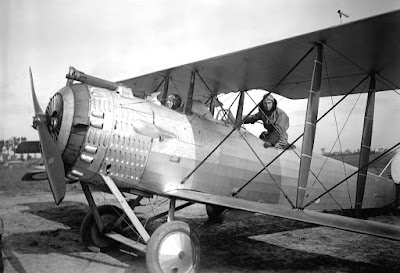During the First World War, the Salmson factory built aircraft engines, generally 9- and later 18-cylinder water-cooled radial engines developed from the Swiss Canton-Unné design, one of the earliest known non-rotary radial engine designs ever used for military aircraft.

The company's first entry into aircraft design came with the Salmson-Moineau S.M. 1, an unusual three-seat reconnaissance biplane with twin airscrews gear-driven from a single Salmson engine in the nose of the fuselage. These aircraft, of which 155 were built, were not especially successful.
The Salmson 2 developed from a requirement to replace the Sopwith 1½ Strutter and Dorand A.R. reconnaissance aircraft in the A2 (tactical reconnaissance) role. Salmson had built the 1½ Strutter under license, and the Salmson 2, while an original design, owed more to the Sopwith than to the earlier Salmson-Moineau. The aircraft was of conventional construction with a two-bay biplane configuration, powered by the company's own Salmson 9Z water-cooled radial engine of 230 bhp.
Some minor control problems were quickly resolved in early testing, but the main defect of the Salmson 2, shared with the contemporary Airco DH.4, was that the pilot and gunner were seated rather far apart, making communication difficult. Production was ordered after trials on 29 April 1917, and deliveries were underway by October of that year. Around 3,200 Salmson 2s were built in France, 2,200 by Salmson and the remainder by the Latécoère, Hanriot, and Desfontaines, companies. Some of these were Salmson 2 D.2 dual control advanced training aircraft.
In addition to its service with the French army, the Salmson 2 served during the First World War with United States air units. Some 700 were purchased, and were generally successful.
Post-war, Salmson 2s were purchased by Czechoslovakia, and remained in service until 1924. Others were transferred to Poland, but were withdrawn by 1920, and replaced by Bristol F.2Bs. Japan undertook license production as the "Army Type Otsu 1", also known as the Kawasaki-Salmson.
The number of aircraft built in Japan is unclear: 300 were built by Kawasaki, and the same quantity by the Imperial Japanese Army's Tokorozawa supply depot, although the total number of aircraft produced may have been as high as 1,000.
- France
- United States
- Belgian Air Force - One aircraft only.
- Czechoslovakia
- Imperial Japanese Army
- Peruvian Air Force - One aircraft only.
- Polish Air Force
- Spain - One aircraft only.
- Russia / Soviet Union - Soviet Air Force
General characteristics
Crew: Two - pilot and gunner
Length: 8.5 m
Wingspan: 11.75 m
Height: 2.9 m
Wing area: 37.27 m²
Empty weight: 780 kg
Loaded weight: 1,290 kg
Powerplant: 1 × Salmson 9Za radial piston engine, 172 kW (230 hp)
Maximum speed: 188 km/h at sea level
Range: 500 km
Service ceiling: 6,250 m
Time to altitude: 2,000 m in 7 minutes 13 seconds
Guns: 1 × forward synchronized 0.303 in Vickers machine gun
+ 2 × rear, ring-mounted 0.303 in Lewis Guns








Ei kommentteja:
Lähetä kommentti
Kaikenlaiset kommentit ovat tervetulleita.